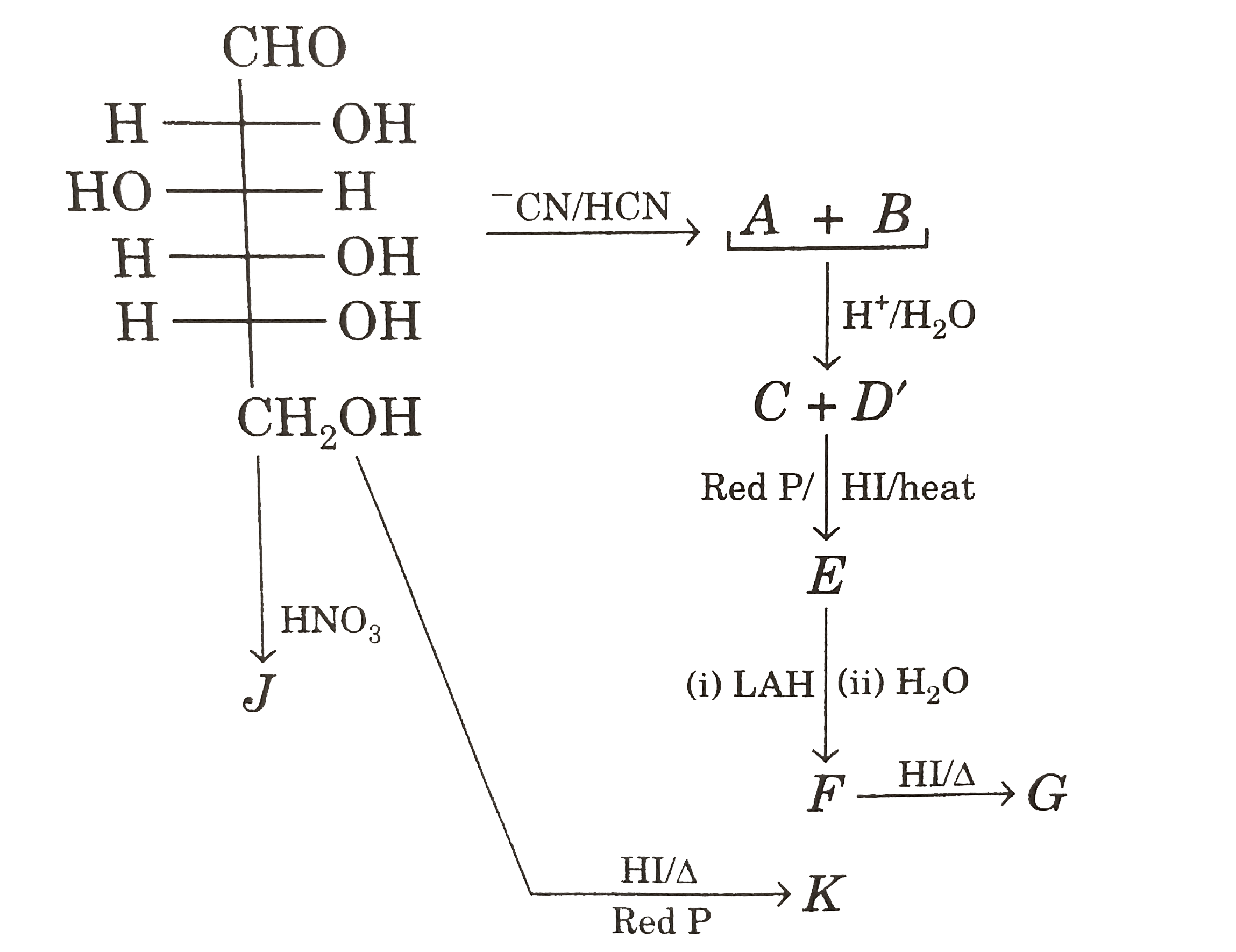What is the relation between for a general reaction,
?
The correct Answer is:A
To find the relation between Kp and Kc for a general reaction of the form:
aA+bB⇌cC+dD
we will derive the relationship step by step.
Step 1: Define Kc and Kp
The equilibrium constant Kc is defined in terms of the concentrations of the products and reactants:
Kc=(C)c(D)d(A)a(B)b
where (C), (D), (A), and (B) are the molar concentrations of the respective species at equilibrium.
The equilibrium constant Kp is defined in terms of the partial pressures of the products and reactants:
Kp=PcCPdDPaAPbB
where PC, PD, PA, and PB are the partial pressures of the respective gases at equilibrium.
Step 2: Relate Concentration and Partial Pressure
Using the ideal gas law, we can relate the concentration C of a gas to its partial pressure P:
P=C⋅RT
where R is the universal gas constant and T is the temperature in Kelvin. Thus, we can express the concentrations in terms of partial pressures:
CA=PART,CB=PBRT,CC=PCRT,CD=PDRT
Step 3: Substitute Concentrations into Kc
Substituting these expressions into the equation for Kc:
Kc=(PCRT)c(PDRT)d(PART)a(PBRT)b
Step 4: Simplify the Equation
This simplifies to:
Kc=PcCPdDPaAPbB⋅1(RT)c+d⋅(RT)a+b
Rearranging gives:
Kc=Kp⋅1(RT)c+d⋅(RT)a+b
Step 5: Combine Terms
Combining the terms gives:
Kp=Kc⋅(RT)Δn
where Δn=(c+d)−(a+b) is the change in the number of moles of gas.
Final Relation
Thus, the relation between Kp and Kc is:
Kp=Kc⋅RTΔn
Similar Questions
Knowledge Check
The relation between Kp and Kx is
AKp=Kx(P∑n)BKp=Kx(P)−ΔnCKp=Kx(P)ΔnDKp=Kx(RT)Δn
What is relation between G and K?AChain isomerBpositional isomerCHomologueDNone of theseThe relationship between KpandKc is correctly shown as
AKc=Kp(RT)ΔnBKp=Kc(RT)−ΔnCKp=Kc(RT)ΔnDKc=Kp(RT)−Δn
What would be the ratio between Kp and Kc for the given reaction ?
C2(g)+→C2H6(g)
View SolutionRead the following paragraph and answer the questions given below,
for a general reaction, aA+bB⇔cC+dD, equilibrium constant Kc is given by Kc=[C]c[D]d[A]a[B]b However, when all reactants and products are gases the equilibrium constant is generally expressed in terms of partial pressure.
Kp=PcC×PdDPaA×PbB
For a reversible reaction , if concentration of the reactants are doubled, the equilibrium constant will be
View SolutionRead the following paragraph and answer the questions given below,
for a general reaction, aA+bB⇔cC+dD, equilibrium constant Kc is given by Kc=[C]c[D]d[A]a[B]b However, when all reactants and products are gases the equilibrium constant is generally expressed in terms of partial pressure.
Kp=PcC×PdDPaA×PbB
In which of the following equilibrium will shift forward on addition of inert gas at constant pressure ?
View SolutionRead the following paragraph and answer the questions given below,
for a general reaction, aA+bB⇔cC=dD, equilibrium constant Kc is given by Kc=[C]c[D]d[A]a[B]b However, when all reactants and products are gases the equilibrium constant is generally expressed in terms of partial pressure.
Kp=PcC×PdDPaA×PbB
For the reaction, C(s)+CO(g)⇔2CO(g) the partial pressure of CO2andCO are 2 and 4 atm at equilibrium . the Kp for the reaction is
View SolutionRead the following paragraph and answer the questions given below,
for a general reaction, aA+bB⇔cC=dD, equilibrium constant Kc is given by Kc=[C]c[D]d[A]a[B]b However, when all reactants and products are gases the equilibrium constant is generally expressed in terms of partial pressure.
Kp=PcC×PdDPaA×PbB
The value of Kp for the equilibrium of the reaction, N2O4(g)⇔2NO2(g) is 2 then the % dissociation of N2O4 at 0.5 atm pressure will be
View Solution
